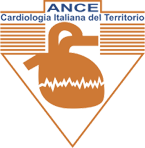Abstract
Objectives This study sought to investigate the associations of left ventricular (LV) strain and its serial change with major adverse cardiac events (MACE) in hypertensive heart disease, independent of and incremental to clinical and LV geometric parameters.
Background In patients with hypertensive heart disease, MACE are associated with abnormal LV morphology, but their association with subclinical LV dysfunction is unclear.
Methods We retrospectively studied 388 asymptomatic nonischemic patients with hypertension who had abnormal LV geometry at a baseline echocardiogram between 2005 and 2014. Global longitudinal strain (GLS) was measured using speckle tracking. Patients were followed for MACE (death and admission because of heart failure, myocardial infarction, and strokes) over median of 4 years. A Cox proportional hazards model was used to assess the association of parameters with MACE.
Results MACE (n = 72; 19%) were associated with higher prevalence of concentric hypertrophy and impaired GLS (both, p < 0.01). The association of GLS with MACE was independent of and incremental to clinical parameters and concentric hypertrophy. Echocardiographic follow-up was performed in 55 patients (median duration, 3 years); deterioration in GLS was also associated with the 10 patients experiencing MACE after the second echo. A risk score was developed using age >70, atrial fibrillation, concentric hypertrophy, and baseline GLS >–16% from the derivation cohort (C statistic, 0.71), and a separate validation cohort showed it to have good discrimination for MACE (C statistic, 0.71).
Conclusions GLS and its deterioration are associated with MACE in asymptomatic hypertensive heart disease. A risk score incorporating strain was useful for predicting risk of MACE.
Perspectives
COMPETENCY IN MEDICAL KNOWLEDGE: The myocardial consequences of chronic systolic and diastolic hypertension include not only myocyte hypertrophy, but also perivascular and myocardial fibrosis and medial thickening of the intramyocardial coronary arteries. All of these features make hypertension a risk factor for the development of MACE, but the extent to which functional evidence of hypertensive heart disease might predict MACE is undefined.
TRANSLATIONAL OUTLOOK: This study of hypertensive heart disease found that LV strain (specifically, GLS) was associated with MACE, independent of and incremental to clinical parameters and concentric hypertrophy. In addition, a multiparametric score including GLS predicted MACE better than concentric hypertrophy alone. Deterioration in LV longitudinal function during midterm follow-up was also associated with MACE.
